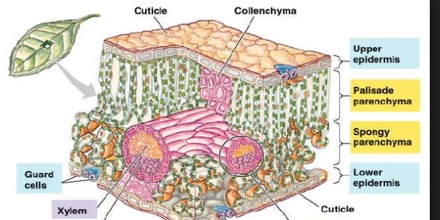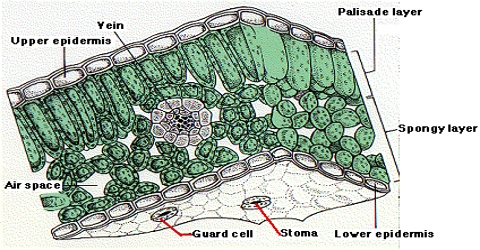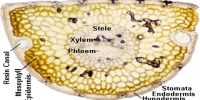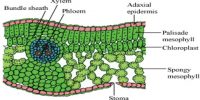Upper epidermis:
Upper epidermis is a only layer of cells containing few or no chloroplasts. The cells are relatively transparent and permit most of the light that strikes them to pass through to the underlying cells. The upper surface is covered with a waxy, waterproof cuticle, which serves to reduce water loss from the leaf.

Most plants are covered by a strongly packed, single layer of see-through cells, called the epidermis. The epidermis covers the outer surfaces of the leaves, stems, flowers, fruits, and roots of the plant, but it is chemically connected to cell layers below.
- It is composed of a one layer of compactly arranged parenchymatous cells.
- A thick cuticle laser is present on the upper epidermis.
- The cuticle prevents the plant from losing too much moisture, which is why you tend to see waxy plants in desert environment
- Chlorophyll and stomata are absent in this Layer.
Functions:
- It protects the inner tissues.
- Saves the inner issues of water.
- Reduce water loss from the leaf.












